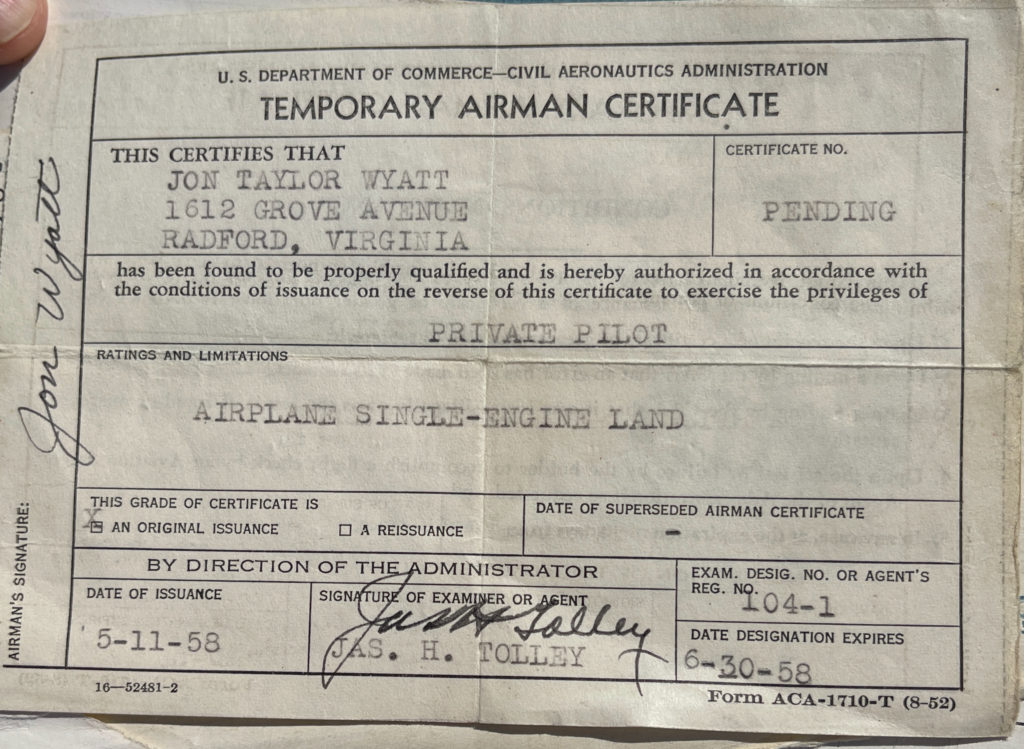One of the airplanes that flew in at our Wings and Wheels Festival (fly-in) on 18 September was piloted by Jon Wyatt and another pilot. Jon had contacted me several months earlier and said that he wanted to fly into WV77 and show me something. Jon said that he had received his private pilot certificate at WV77 in the 1950s. Jon few into WV77 several times this summer in a Cessna Cardinal, N63VT but we never managed to be at the airport at the same time. Jon owned N63VT for quite a while and the tail number was the date he graduated from Virginia Tech. He had sold the plane a few years ago as he felt that the years were catching up to him but the new owner flies Jon in the plane quite often. So they flew over on the 18th and Jon got out and showed me the temporary certificate below. It is his temporary from his private pilot check ride and his examiner, who signed the certificate, was my Grandfather, James Tolley. I knew that my Grandfather was a DPE but I have never seen a temp certificate signed by him. It was really a special moment. I think my Grandfather would be happy knowing that 60 plus years later his grandson is a DPE. As a side note, a Temporary certificate today looks just like this one except it says “Department of Transportation – Federal Aviation Administration” on the top instead of “Department of Commerce – Civil aeronautics Administration.” This temporary was issued on 11 May 1958 and the FAA replaced the CAA on 23 August 1958.

